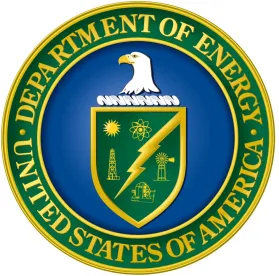On July 22, 2022, the U.S. Department of Energy (“DOE” or the “Department”) published a final rule amending the certification and reporting requirements for certain covered products and equipment. See 87 Fed. Reg. 43,952 (July 22, 2022). Specifically, the amendments address the information that must appear in certification reports for ceiling fan light kits, general service incandescent lamps, incandescent reflector lamps, ceiling fans, consumer furnaces and boilers, grid-enabled consumer water heaters, dishwashers, commercial clothes washers, battery chargers, and dedicated-purpose pool pumps. In each case, the revisions are intended to (i) maintain consistency between information reported in annual certifications and the current energy conservation standards and test procedures, and (ii) ensure DOE obtains all the information necessary in manufacturer certification reports to accurately classify products and confirm compliance.
For example, the final rule amends the dishwasher certification requirements at 10 C.F.R. § 429.19(b) by requiring manufacturers to indicate the type of detergent used for certification testing. In particular, manufacturers will need to specify whether Cascade with the Grease Fighting Power of Dawn or its replacement product, Cascade Complete Powder, was used during testing. This change aligns with the pending revisions to the dishwasher test procedure, which, as proposed, would allow the use of the new detergent during certification testing, and also ensures that any assessment or enforcement testing is conducted using the same detergent used by the manufacturer. See 86 Fed. Reg. 72,738 (Dec. 21, 2021). The final rule also recategorizes the “reported capacity” of dishwashers as a public, as opposed to non-public, certification requirement at 10 C.F.R. § 429.19(b)(2).
DOE is also adopting several amendments to the commercial clothes washers (“CCW”) certification requirements at 10 C.F.R. § 429.46. As an initial matter, the final rule removes the reporting requirements for models tested using appendix J1, which is no longer used as the basis for testing CCWs. The rule also amends the certification requirements for CCWs to require reporting of:
-
the clothes container capacity (in cubic feet), which is a key parameter in determining whether the equipment at issue meets the definition of a CCW and also in calculating key CCW factors for certification;
-
the axis of loading (i.e., top-loading or front-loading), as DOE has established classes of CCWs defined by the type of axis; and
-
the corrected remaining moisture content (“RMC”), which accounts for variations in test cloth lots when measuring per-cycle energy consumption for removal of moisture.
In addition, DOE has added sampling provisions to Part 429 that specify how to determine the reported values for corrected RMC, a description of how clothes container capacity should be measured, and provisions outlining how to appropriately round the newly required capacity and corrected RMC values.
As a final point of note, the Department has finally added a separate reporting date for battery chargers at 10 C.F.R. § 429.12(d), which will require that battery chargers be recertified annually on or before September 1. This requirement, and those discussed above, will not become mandatory for the annual certification reports submitted for products and equipment until February 17, 2023.





 />i
/>i

